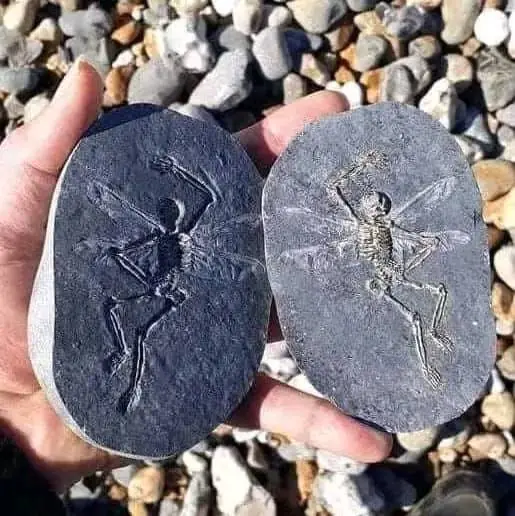
NASA’s Mars Rover Uncovers Mysterious Spheres On The Planet’s Surface, Leaving Experts Baffled

Mars has once again defied expectations. NASA’s Perseverance Rover, exploring the Jezero Crater, has stumbled upon a puzzling new rock formation unlike anything ever seen on the Red Planet. Nestled on the lower slopes of Witch Hazel Hill, scientists have named this curious find “St. Paul’s Bay”—and it may change what we know about Mars.
An Unusual Discovery That Feels Almost Artificial
From a distance, the rock catches the eye. But up close, the texture is startling—hundreds of tiny, dark gray spheres are packed tightly across the surface, creating a bumpy, almost crust-like appearance. Some are round, others irregular or broken. A few even show tiny pinholes.
“It almost looks engineered,” one researcher commented. But it's all natural—at least as far as we know.
The formation didn’t originate where it was found. NASA classifies it as a “float rock”—a fragment that likely traveled from somewhere else, possibly pushed by natural forces or displaced by an ancient impact event. Its strange appearance and mysterious origin have triggered a wave of questions.
What Could Have Formed It? The Leading Theories
So far, scientists are considering two major possibilities:
-
Impact Event
A meteorite strike could have melted nearby rock and flung molten debris into the air. As it cooled mid-flight, the droplets may have hardened into small spheres before settling back down on the surface. -
Erosion From Higher Ground
Satellite imagery shows darker rock layers above Witch Hazel Hill. It's possible this rock broke off from those upper layers and rolled downhill over time.
Both ideas offer compelling clues—but also contradictions. The impact theory doesn’t fully explain the angular shapes or pinholes, while the downhill theory raises the question: Why haven’t similar rocks been found uphill?
Until now, the mystery remains unsolved.
A Closer Look: High-Res Images Add to the Intrigue
Perseverance’s cameras have captured high-resolution images of the rock, allowing scientists to study its surface in incredible detail. These visuals reveal the tightly packed nature of the spheres and show a pattern that’s never been observed before.
These images also let researchers compare this rock to past discoveries—especially the famous “Martian blueberries” found in 2004 by NASA’s Opportunity rover.
Are These the New Martian Blueberries?
Opportunity’s blueberries were hematite-rich spheres that offered groundbreaking evidence that Mars once had water. But those were scattered across the surface—not clustered tightly like the ones in St. Paul’s Bay.
And while those formed in watery conditions, scientists still don’t know if this new formation shares the same origin. Until a full chemical analysis is done, it’s unclear whether water played a role—or if something entirely different shaped them.
Still, this isn’t just déjà vu. It’s a new clue that Mars may be able to produce similar features through multiple processes, each unlocking a different part of the planet’s history.
Why It Matters: Unraveling Mars’ Geological Story
Every strange rock, every odd sphere, brings us closer to understanding Mars’ true nature.
If water helped shape these formations, it could reinforce the theory that Mars once supported life-friendly environments. If not, they might reveal previously unknown geological forces operating below the surface.
These discoveries guide future missions. NASA scientists study them to decide where to explore next and what kind of samples to collect.
What’s Next for Perseverance?
Equipped with advanced cameras, sensors, and spectrometers, Perseverance will continue to analyze the St. Paul’s Bay rock. If it’s deemed especially significant, it could even be flagged for return to Earth in a future sample mission.
In the meantime, its presence fuels curiosity and deepens the mystery. Mars might be a cold, distant planet—but it’s far from silent. With every discovery, it speaks to us through rock, dust, and ancient secrets buried beneath the surface.
Final Thought: Mars Has More to Say
The more we explore, the more we realize: Mars still has stories to tell. Thanks to Perseverance, we’re listening closer than ever.
From float rocks to Martian blueberries, every clue brings us one step closer to answering the ultimate question: Was Mars ever alive?
One thing’s for sure—the Red Planet isn’t done surprising us.
News in the same category


Scientists Grow First Fully Formed Tooth In Lab — A Groundbreaking Breakthrough

The Hidden Meaning Behind Wearing an Ankle Bracelet—Most People Have No Idea

Disturbing Post Surfaces From FSU Shooter Just Before Campus Tragedy

Photographer of tragic little girl trapped in volcanic mudflow explains why he didn’t help her

New COVID Wave Surges — Health Officials Sound Alarm As Cases Double

It is with heavy hearts that we announce the passing of this legendary actor

Amber Heard’s Face Is The ‘Most Beautiful In The World,’ According To Scientists

Jin of BTS is going on a solo tour!

Optical illusion reveals whether you’re an introvert or extrovert

A patient passed away after a nursing intern accidentally injected milk coffee into their vein.

The IT boss, his wife, and their three kids were identified as the victims of the New York helicopter tragedy

UK: A penniless father of 3 commits suicide while waiting for welfare payments

Philippine Film Icon Nora Aunor Passes Away at 71

Edward Mordake: The Man with Two Faces and the Tragic Legend…

A Mystical Discovery on a Sussex Beach: Fossil of a “Fairy” Found in 2015?

People Freaked Out After Spotting Creepy Hidden Face in Group Photo

California Authorities Identify Human Remains As A 13-Year-Old Girl Who Vanished 50 Years Ago

Stephen Hawking said he had a simple answer when asked whether he believed in god
News Post

This is my preferred way

Julia Roberts Gave Birth to Twins at 37 — Pics of Her ‘Beautiful’ Teens Who Look like Her Husband

ABC Cubes For Flawless Skin

Scientists Grow First Fully Formed Tooth In Lab — A Groundbreaking Breakthrough

Fermented Rice Water & Cloves Scalp Treatment

Top 10 Hydrating Serums for Dry Skin Trusted by Experts and Beauty Enthusiasts

Amazing uses of vaseline for skin

Unlock the Power of Vaseline: 16 Beauty Benefits & Smart Precautions

WE SENT MONEY FOR OUR SON TO PAY FOR COLLEGE – ONE DAY, WE DISCOVERED HE WASN’T EVEN ENROLLED AND WAS LIVING IN AN OLD TRAILER.

5 Baking Soda Uses for Face & Skin – Natural Beauty Secrets You Shouldn’t Miss

20 Great Uses of Vaseline Which You Probably Don’t Know

Unlock the power of Vaseline & Lemon

✨ Castor Oil Home Remedies: Unlock the Power of Nature for Your Beauty Routine ✨

I WAS THE ONLY ONE WHO ATTENDED MY GRANDMOTHER’S BIRTHDAY LUNCH – AFTER SEEING HER TEARS, I DECIDED TO TEACH MY FAMILY A LESSON

The Best Ways to Use Vaseline: A Complete Guide for Beauty & Skincare

Rub This Slice On Face To Get Spotless Skin

My Husband’s Cousin Came to Stay with Us Temporarily with Her Son – If Only I Had Known It Was All a Trap.

Restaurant Owner Disguises Himself as a Homeless Man to Choose His Heir.

Vaseline Makeup Removal Tips Not Everyone Knows
